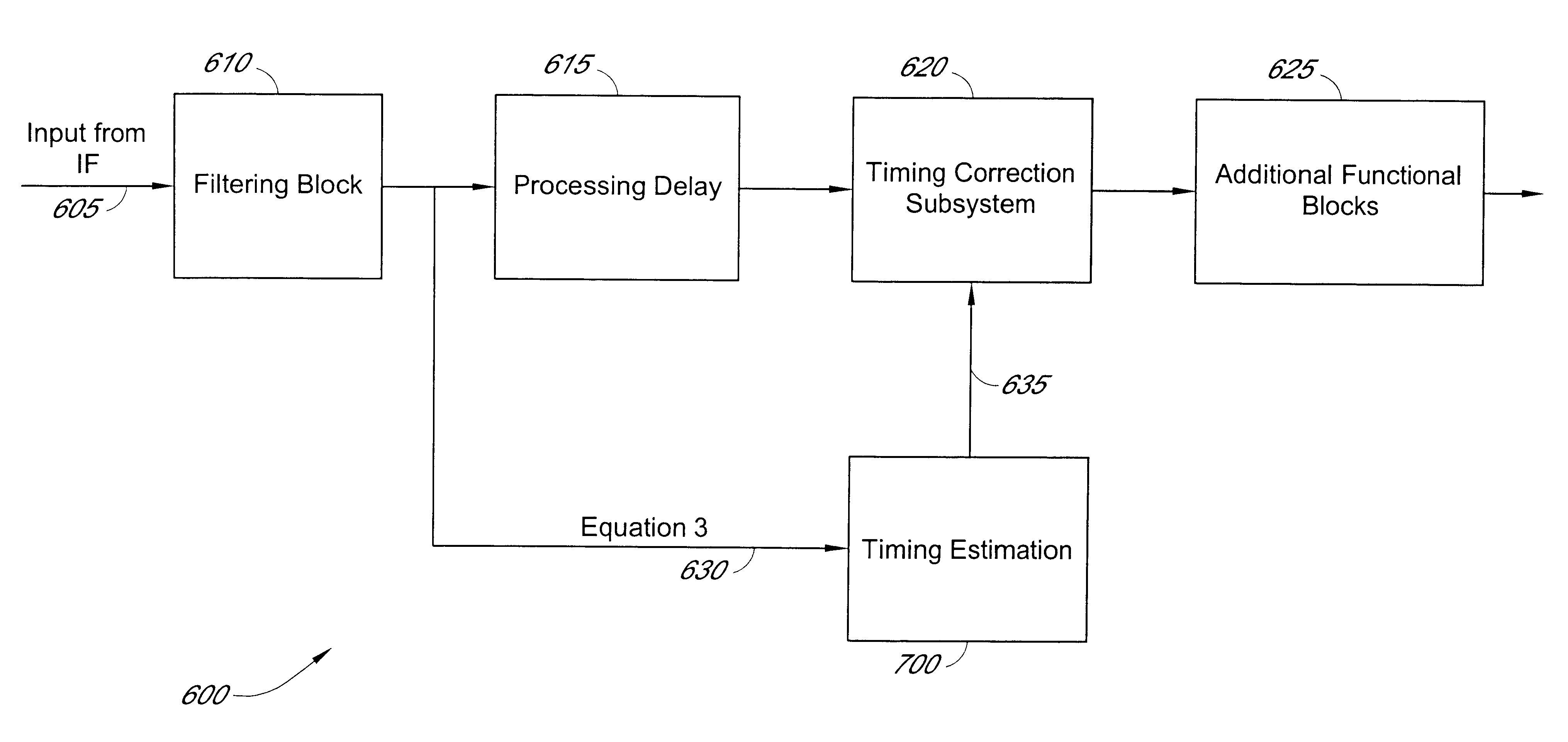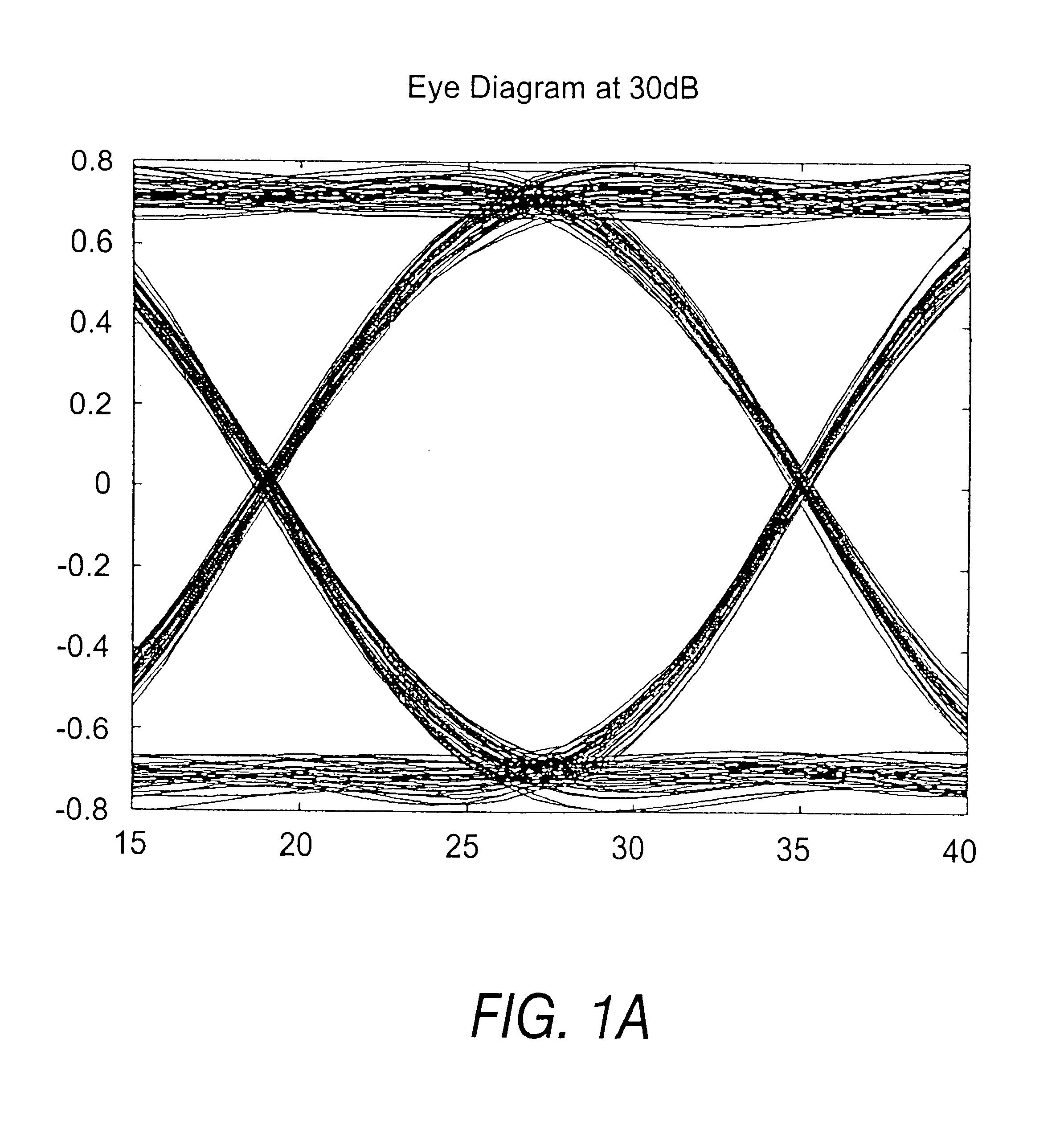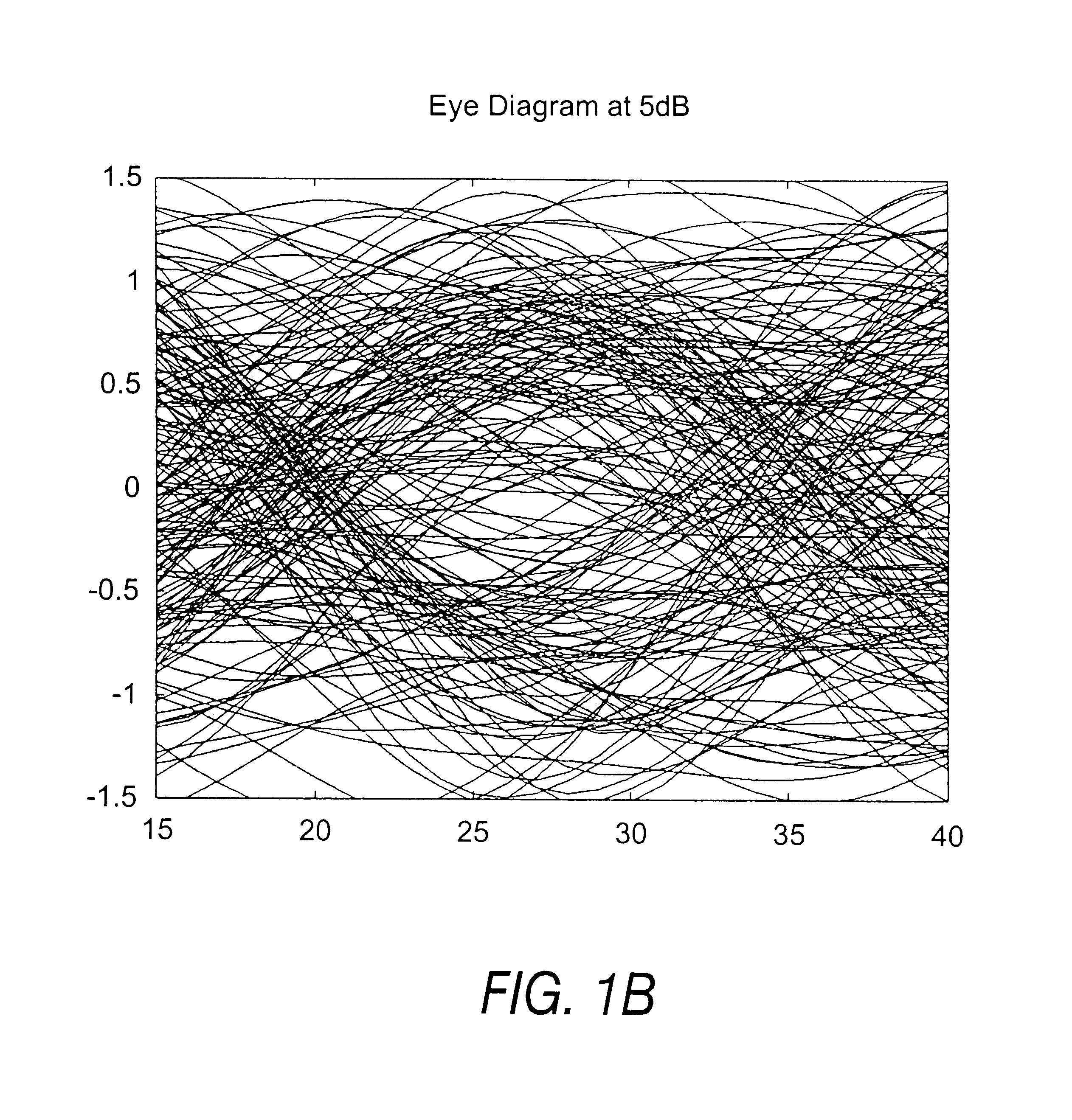Non-data aided maximum likelihood based feedforward timing synchronization method
a technology of maximum likelihood and feedforward timing, applied in the field of communication systems, can solve the problems of high non-linear and totally impractical implementation of mathematical expressions, changes in the reception signal, and inability to fully implement mathematical expressions, and achieve the effects of reducing the number of times of transmission, reducing the number of transmissions, and improving the accuracy of transmissions
- Summary
- Abstract
- Description
- Claims
- Application Information
AI Technical Summary
Problems solved by technology
Method used
Image
Examples
Embodiment Construction
is provided below. As a particular embodiment of the invention, the following description is not intended to limit the enumerated claims, but to serve as a particular example thereof.
FIGS. 1a and 1b illustrate the concept of an eye opening at high (30 dB) and low (5 dB) signal to noise ratios respectively. Superimposing portions of a signal, equivalent to the duration of one or more symbols, onto itself forms an eye. At high signal-to-noise conditions there are few fluctuations on the signal so the central portion of the superimposed signal remains clear and tends to form the outline of an eye. This is illustrated in FIG. 1a at 30 dB. FIG. 1b illustrates how the eye closes at lower signal to noise conditions due to fluctuations of the amplitude of the signal.
FIG. 2 illustrates the difference between a continuous time and discrete time representation of a signal for the case of taking four samples per symbol. Analog receivers use the continuous time representation of the received sig...
PUM
 Login to View More
Login to View More Abstract
Description
Claims
Application Information
 Login to View More
Login to View More - R&D
- Intellectual Property
- Life Sciences
- Materials
- Tech Scout
- Unparalleled Data Quality
- Higher Quality Content
- 60% Fewer Hallucinations
Browse by: Latest US Patents, China's latest patents, Technical Efficacy Thesaurus, Application Domain, Technology Topic, Popular Technical Reports.
© 2025 PatSnap. All rights reserved.Legal|Privacy policy|Modern Slavery Act Transparency Statement|Sitemap|About US| Contact US: help@patsnap.com



